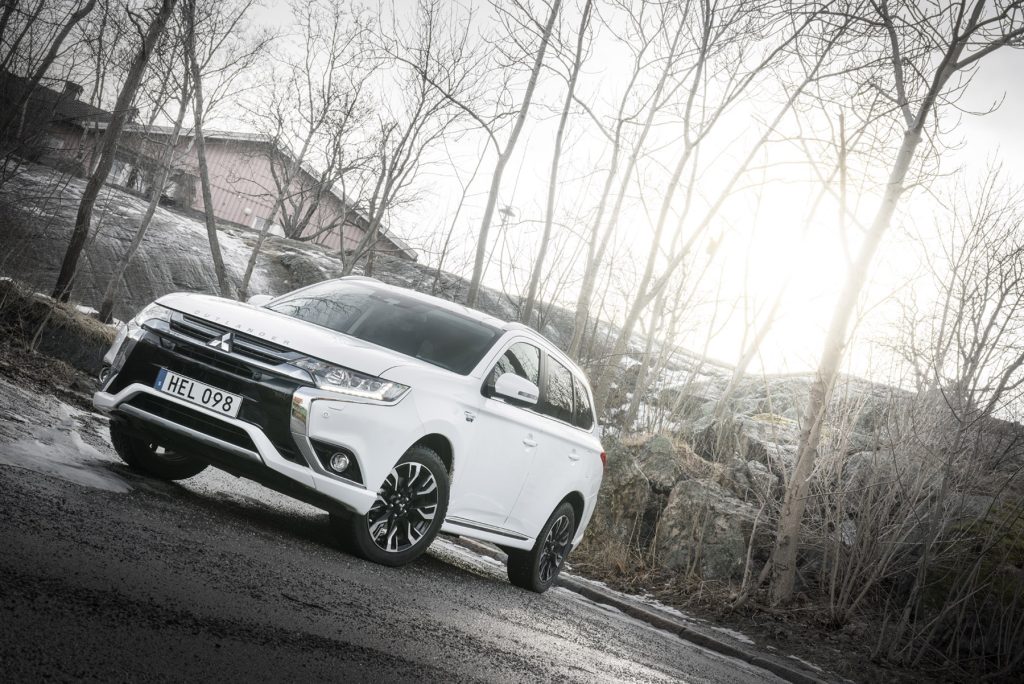
The article was originally produced on March 16, 2017, some facts and prices may have changed since then.
Mitsubishi Outlander PHEV
The Outlander PHEV was an instant success and now it's gotten even better. Cars Collection has tested and checked out the updates.
Mitsubishi has not had it easy after finding itself in a similar situation to Volkswagen with false emissions figures. Something that was discovered and caused the company's value to plummet and as a result Nissan bought most of the company. However, this is something we have not noticed much of in the Swedish market and sales of the Outlander PHEV continue to go like a train. The reason is that it remains one of the few, if not the only, four-wheel-drive SUV with hybrid drive with a towbar included in the super green car premium. The first Outlander, albeit considerably smaller, arrived in 2001 and was then called the Airtrek.

What is new on the Outlander PHEV now is that from 2017 you can drive the car entirely on electricity and also do it as you please. With a push of a button between the seats, the car switches over to fully electric operation. The range is stated at 54 kilometers, which is two kilometers longer than with the predecessor. On the screen in the center console, you can follow exactly how the energy flow moves through the car. When you brake, energy is returned to the battery and if you press the "Charge" button, the engine constantly charges the battery. When the battery runs out, the car automatically switches to gasoline operation. The engine, which is in it, is a four-cylinder two-liter with 121 horses. Together with the electric motors, the Outlander PHEV has 285 horses. To reach 100 kilometers per hour, 11 seconds are needed and the top speed is 170 km/h. No rocket, but thanks to the torque in the electric motors, the car still doesn't feel sluggish.
The biggest change on the updated Outlander PHEV has been on the inside. Partly the possibility of pure electric operation, but also that the emergency brake now detects pedestrians and can brake for them. A lift and safety factor in the increasingly stressed everyday life we live in. To make precisely one of the most distracting things in our everyday life smoother, they have now integrated mirroring of the smart mobile phone so that everything appears on the screen when you connect the phone. If you choose the highest equipment level, you also get an electric glass sunroof.

The ride in the Outlander PHEV is comfortable, you sit well in the seats and have a good view through the well-sized windows. Thanks to cameras all around, pocket parking becomes pure pleasure as you see the surroundings around the car on the screen. Once out on the road, the car runs stably and calmly and even on roads with poorer surfaces it behaves well, although a certain amount of noise can be experienced in the passenger compartment. However, this can easily be hidden if you turn the volume up a bit and let the bass flow into the cabin instead. An enlarged bass speaker is mounted in the trunk. Going too far into the wilderness with your Outlander PHEV is perhaps not a recommendation. But handling everyday situations when others get stuck in snowdrifts or keeping the right course in the snow, the car copes very well.
The Outlander PHEV is currently a very attractive purchase, but the question is how long until any political changes regarding environmental cars. So if you want one and a monthly cost of around one thousand reais, it's high time to book one.

Mitsubishi Outlander PHEV Business
| Basic price | From SEK 469,500 (Fleet Edition 395,500) |
| Engine | 2-liter 4-cylinder gasoline engine. 121 hp. Torque 190 Nm. at 4,500 rpm. Front electric motor, 82 hp, 137 Nm. Rear electric motor, 82 hp, 195 Nm |
| Transmission | Electric four-wheel drive. Direct operation |
| Acceleration | 0-100 km/h in 11.0 s |
| Top speed | 170 km/h |
| Max towing weight, kg | 1,500 (1,130 with B card) |
| Declared consumption | 1.7 l/100 km. CO2 emissions 41 g/km |
| Web | www.mitsubishi-motors.se |




